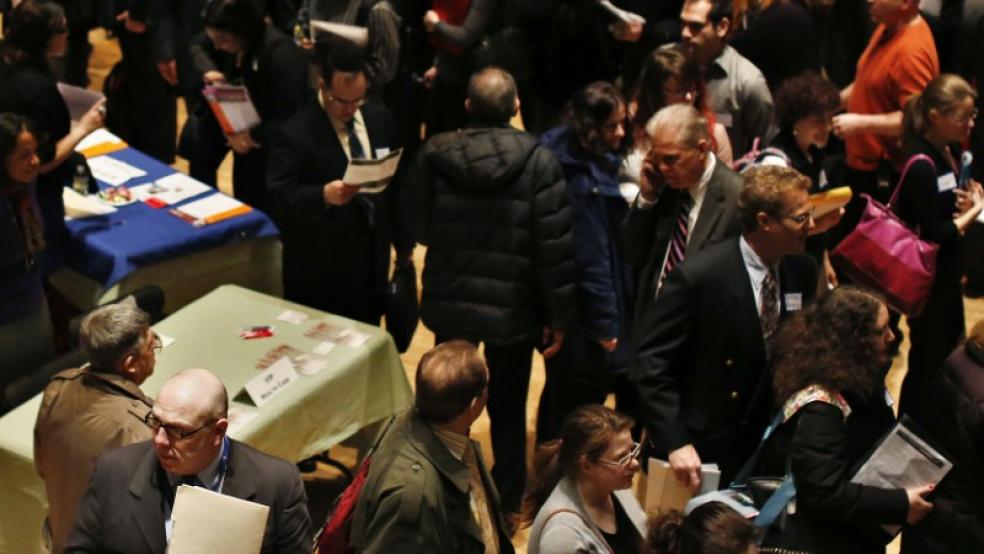The sharp bond market selloff is starting to pinch American consumers and companies, causing a mild economic tightening that, if sustained, could raise alarms at the Federal Reserve and even delay a plan to hike interest rates in coming months.
U.S. mortgage rates have reached their highest level in a year-and-a-half, auto loans are getting a bit more expensive, and corporations across the board have seen their borrowing costs jump as U.S. and European debt retrenched in recent weeks.
Related: Bond Market Is Sending the Fed an Important Signal
With benchmark U.S. government debt having jumped from 2.13 percent to as high as 2.49 percent so far this month, Fed officials headed into a policy meeting next week will be asking how long the selloff could last -- and how much it could slow the economic rebound from a winter slump.
"It's got to be part of their calculus. And I do think that they will try to micro-manage the market," said Craig Dismuke, chief economic strategist at Memphis-based broker dealer Vining Sparks.
After 6.5 years of ultra easy monetary policy, Fed officials would welcome at least some evidence of tightening financial conditions as they increasingly telegraph a rate hike.
The concern is a repetition of 2013, when then-Fed Chairman Ben Bernanke set off a market rout that threatened the recovery when he suggested a stimulative bond-buying program could soon be curbed.
Investors and economists said that while the recent market move is on the Fed's radar, given its volatility, alarm would grow if the 10-year U.S. Treasury yield were to soon rise above 2.75 percent.
Related: Is the Air Coming Out of the Bond Market Bubble?
Such a tightening could imperil the all-important housing market, as it did during the so-called "taper tantrum" two years ago, which prompted a flurry of dovish speeches by Fed officials attempting to control the damage.
At the time, stock markets plunged and mortgage rates shot up to 4.8 percent, spooking home buyers. While today's economy does not face that sort of trouble, there are warning signs.
A 30-year fixed mortgage averaged 4.17 percent last week, its highest level since November 2014, prompting a rush of applicants to lock in the rate before costs rise any more. The cost of new car loans is also edging higher, though from a record low in the fourth quarter of 2014.
Fed officials regularly highlight housing and autos as drivers of what is expected to be stronger consumer confidence and broader GDP growth in the second half of the year.
Robust job gains suggests the rebound is underway, with Fed Chair Janet Yellen eyeing an initial rate hike this year and economists predicting it will come in September.
Yet U.S. productivity has mysteriously sagged and wages have not climbed as expected, leaving the economy fragile. Meanwhile, Fed Governor Daniel Tarullo has emphasized the central bank's long-simmering concern that markets may not be liquid enough to withstand a volatile selloff.
Related: IMF’s Surprising Message to Yellen About Interest Rates
The sharp U.S. bond selloff is a response to sturdy U.S. economic data, as well as easing concerns over deflation across Europe, which has sent German benchmark Bunds tumbling too.
As Treasuries plunged last week, Tarullo was one of three influential Fed officials who sounded surprisingly cautious tones over raising rates. "We do experience cross currents from abroad and they do affect our recovery and they affect the policy response," said Fed Governor Lael Brainard, who rarely discusses policy publicly.
The commentary could hint at the central bank's response if the selloff runs into the summer and continues to tighten conditions in the real economy. New York Fed President William Dudley has warned the Fed would tighten policy less aggressively if markets, including corporate debt, respond too much.
Two years ago, yields on investment-grade corporate bonds shot from a record-low 2.62 percent in early May to a high of 3.65 percent in early September, or 103 basis points.
This year, since a mid-April low-water mark of 2.84 percent, the yields have climbed to 3.38 percent, or 54 basis points. Junk bond yields have risen from 5.98 percent in mid-April to 6.46 percent.
"At this point, I don't think there has been enough move in broad financial conditions, including the 10-year yield, to cause the Fed to pause (rate hikes) for longer," said Peter Hooper, chief economist at Deutsche Bank Securities.
"This latest spate of dovishness is about keeping the foot on the accelerator until we see the data we're expecting."
Additional reporting by Dan Burns
Top Reads from The Fiscal Times:




